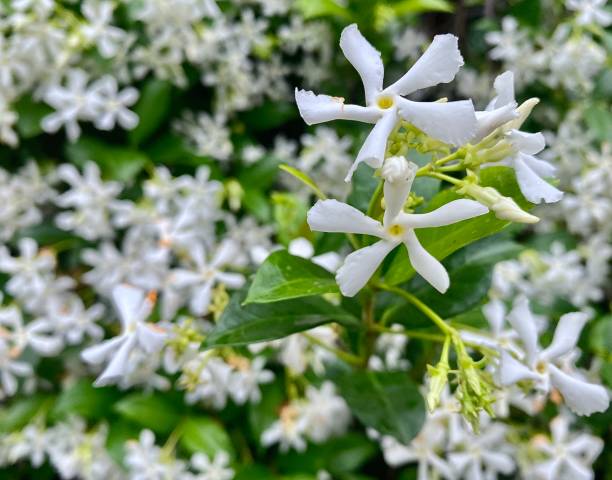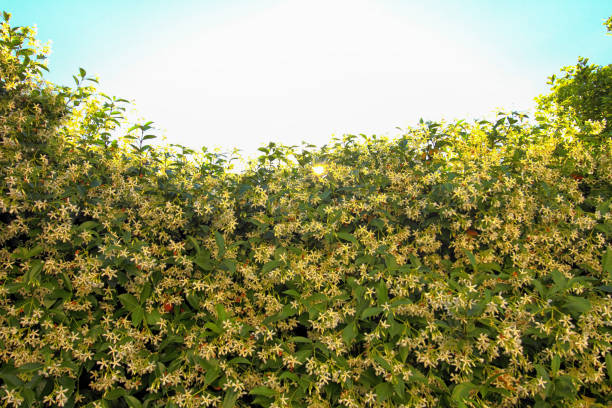Does Star Jasmine Need Full Sun?
Star jasmine will thrive in either full sun or partial shade but choose a location that receives plenty of sunlight for the best flowering results. A minimum of eight hours of direct sunlight per day is required for the vine to produce the greatest number of flowers. Because star jasmine is grown as a groundcover and spends a lot of time in the shade of larger plants or trees, you may notice a decrease in the number of blooms the plant produces.

Table of Contents
Can Star Jasmine Survive Heat?
Yes, as long as you mulch around your plants to keep the soil from overheating over summer. Avoid drying out star jasmine in the first year after planting, especially if the weather is hot. Keeping the roots moist but not soggy is as simple as giving them a good soak every few days. During the hot months, mulching helps protect both the soil and your plants from out-of-control temperatures while preventing evaporation. By following these general guidelines, you’ll be sure to have long seasons of blooms – even in warmer climates! They may begin to use more water in this location due to the high light intensity and warmer temperatures. Try adding this water with a hose first, but try to avoid watering every day if at all possible. If the soil does not drain well, watering these plants every day may cause some problems for the plants.
Can Star Jasmine Survive With No Shade?
If the soil is rich and well-drained, star jasmine can thrive in full sun and survive with no shade. However, if you plan to transfer your Star Jasmine from partial shade to no shade, they will undergo shock. As they move from partial shade to full sun, they will likely suffer from leaf scorch and dieback. But don’t worry, they will get back. There’s a chance that you may have to remove the damaged parts, fertilize them in the fall season, and allow them to regrow. Plant health is heavily influenced by how plants respond to hot weather. Plants that are not as healthy will struggle more in hot weather than plants in good health.
Improved soil health will go a long way toward improving plant health and the ability of plants to withstand adverse environmental conditions. Confederate Jasmine, another name of Star Jasmine, prefers moist, well-drained soil that contains enough organic matter, such as humus, to retain moisture. It also provides nutrients from decaying plant material.

Can Star Jasmine Survive in Full Shade?
Star jasmine grows best in full sun, tolerates partial shade, and survives in full shade. However, blooms are less likely to appear when there’s too much shade. The plant needs sunshine to flower and grow healthy leaves and stems. If you want more blooms in your garden, cut some of the Star Jasmine back each year. It may be a good idea at first, especially if you’re asking it to transition from growing under trees. Plants can acclimate quickly and greatly benefit from this experience.
What Temperature Can Jasmine Tolerate?
Since they are tropical plants, Jasmine plants can withstand high temperatures and humidity. Still, they will not survive cold winter temperatures. Ideally, the temperature should be between 60-75°F (15.6-23.8°C) when growing Jasmine flowers. If you have an established Jasmine, keep an eye on your plant and ensure it’s getting enough water. Star jasmine will tolerate cold temperatures if the temperature isn’t too low for their health or blooms don’t appear as usual in areas with cool weather. It is hardy in USDA Zone 8. It can withstand temperatures as low as 10°F (-12.2°C). This plant does well in both hot and cold climates.
